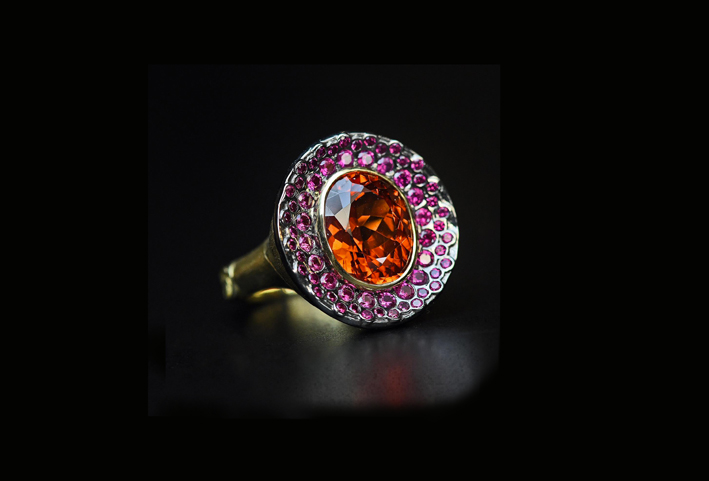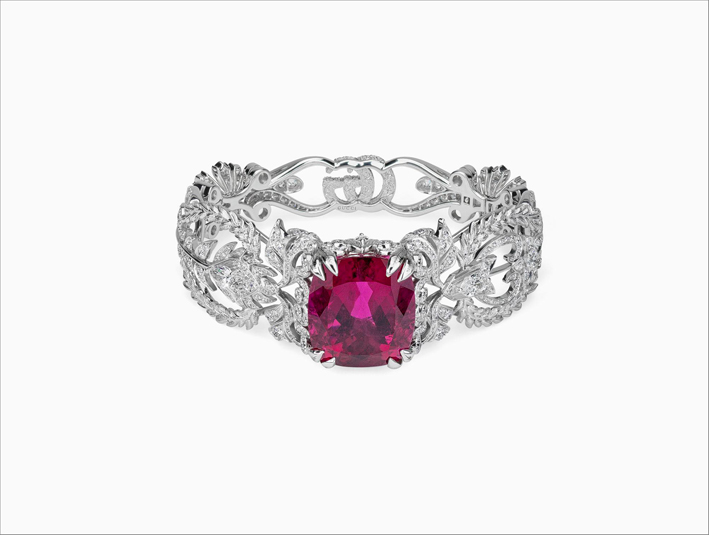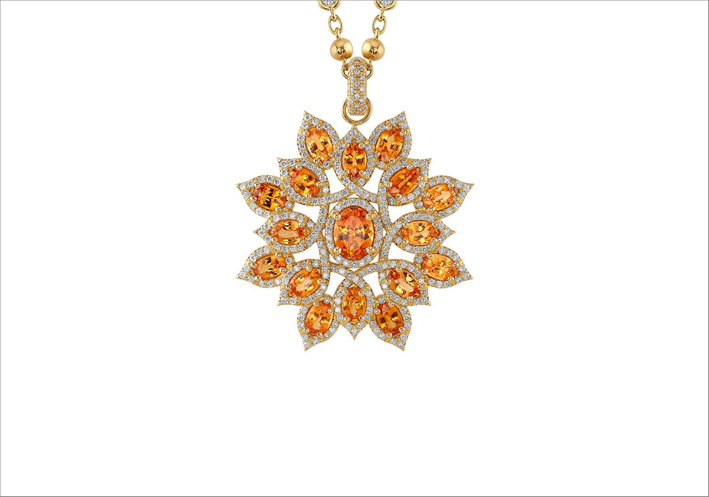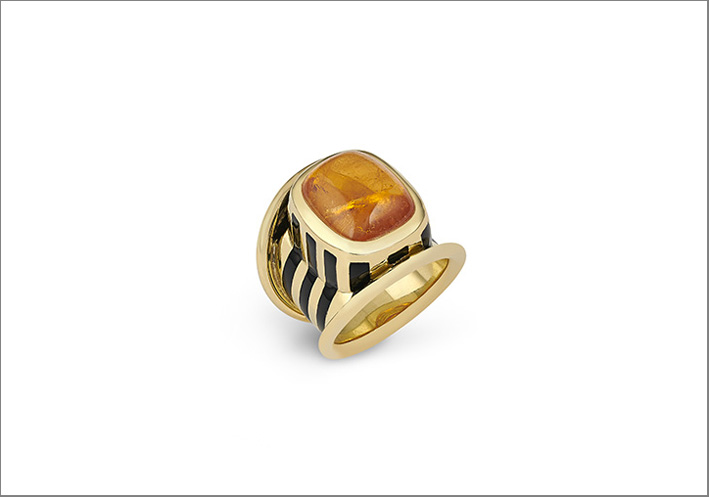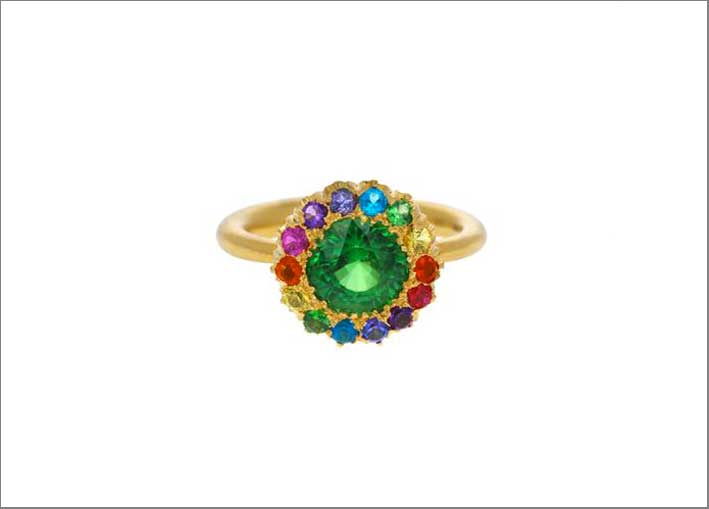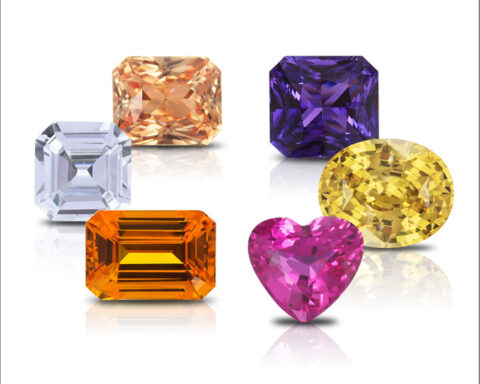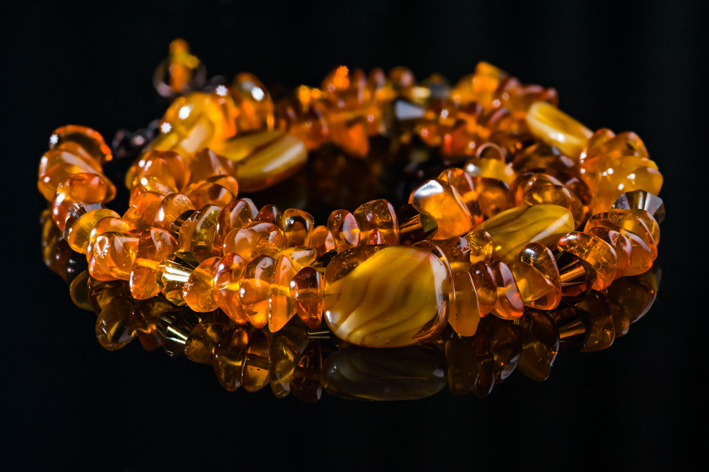Garnet is one of the most used stones in jewelry. But can you distinguish it? Here’s what you need to know about the garnet, stone of the month of January, which actually brings together many different types ♦
It’s easy to say garnet. Actually this stone is classified in different ways and confused with other with the same color. It’s an old habit: in the past the only criteria to describe a stone was, in a generic way, the color. So all the red gems were recognized as rubies, from the Latin meaning of rubeus: red, in fact. No wonder, then, that for 700 years the central stone of the crown of England, 170 carats, has been called “the Black Prince’s Ruby,” despite being a magnificent spinel, which is not a garnet stone but it’s looks like. Even some varieties of garnet in the past have been mistakenly categorized as rubies. The matter is further complicated, however, because not only it has many colors such as purple, brown, orange, yellow and green, but it is often sold under the trade name and not the scientific one. So, nature abounds colored gemstones and yet it was not always easy to catalog them. How to distinguish and choose them? Here you have a little guide.
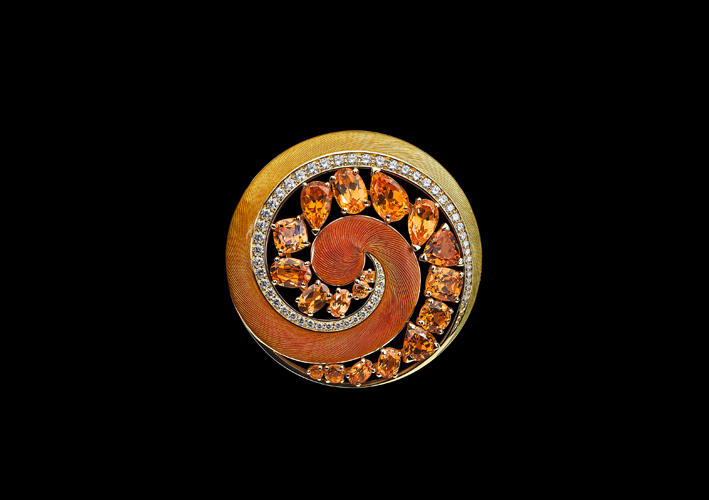
Rhodolite
It is a variety of garnet. From the geological point of view, the stone is made 55% of pyrope and 37% of the almandine. The garnet differs from ruby not only for its composition, but also how it behaves under the light: from a natural ruby emerge a double rainbow with various shades of red and blue, while the rhodolite is even more brilliant and alive, and will show only a rainbow with green and yellow. Caution: rhodolite can be synthesized in the laboratory, but it is one of the few stones to never be treated artificially. Its name derives from the greek rhodo (pink) and lithos (stone) and was coined by George Frederick Kunz for its resemblance to the flower color of the rhododendron mountain.
Color: compared to the other red garnets is slightly lighter and that’s why is confused with ruby, but has some hues of purple and purpura. No coincidence that the most popular colors are red-purple and raspberry discovery in 1987, the hue of the fruit.
Sources : was discovered in North Carolina, but the major deposits are in Sri Lanka, Tanzania, where in the Kangala region was identified the Raspberry variety and in the one pale purple in Umba valley, Zimbabwe and Brazil. From the Orissa Indian region and only from there comes the grape garnet with the same colour of a good amethyst.
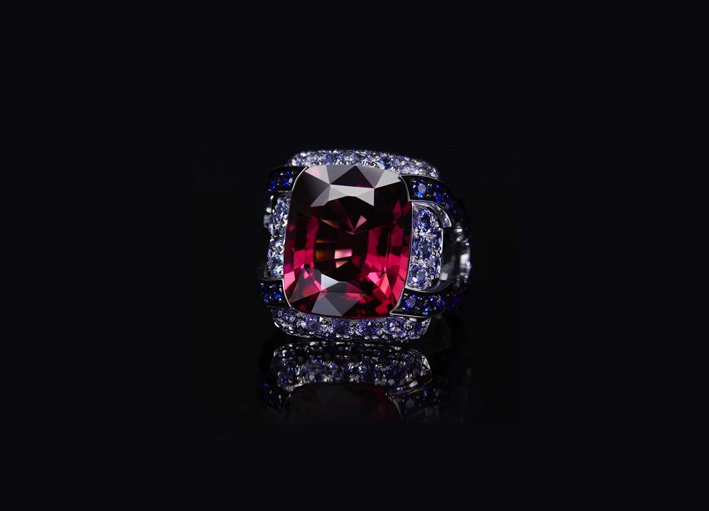
Almandine garnet
The presence of metals such as manganese and calcium gives the garnet many colors, but when the component is predominant almandine, appearance is dark red, sometimes brownish. And this is the best known variety, with the name of the Mozambique garnet, named by the East African country of origin. Cited in Greek mythology, praised in the Jewish and Muslim tradition and used by the Vikings for the funeral ornaments, is rather hard and with a high refractive index. Sometimes is called Oriental Garnet.
Sources: Mozambique, India and Brazil.
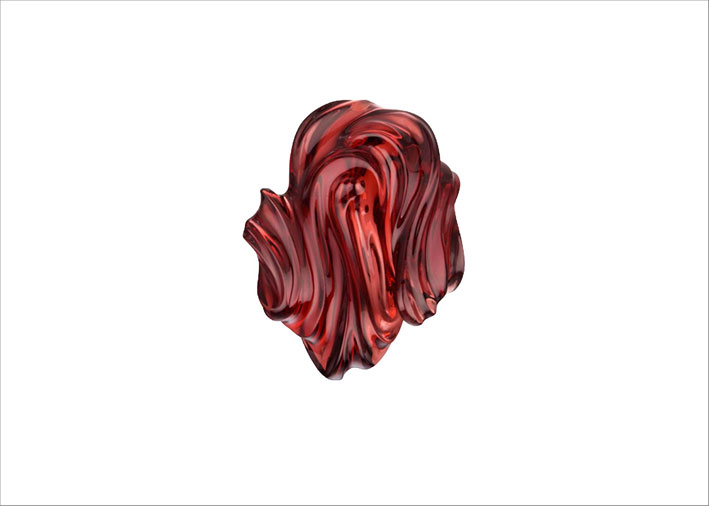
Spessartite
The name comes from Spessart, Bavarian village where it was discovered the mid-nineteenth century. Initially little used in jewelry because it is very rare, after the discovery of another field in Namibia, its spread has grown tremendously, because it is the variety of garnet that has the highest refractive index after diamond. Feature that makes it one of the most versatile gems.
Colour: from manganese derives its characteristic orange primary color while the presence of iron gives the red shades and turns it to orange red, golden orange, orange yellow or dark red. The Mandarin Garnet is the most valuable variety of Spessartine, discovered in Kunene, Namibia.
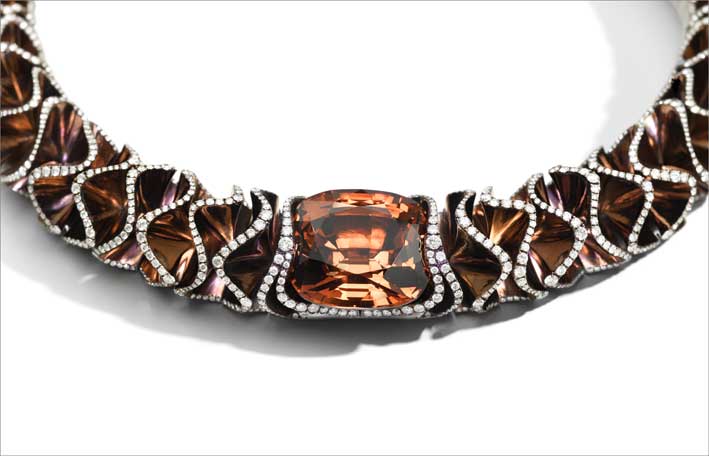
Sources: if the Spessart mine is now exhausted, Namibia continues to be the reference point along with Nigeria, while other deposits are in Australia, Brazil, Kenya, Madagascar, Mozambique, Pakistan, Sri Lanka, Tanzania and Zambia.
Tsavorite
It is the trade name of Garnet Grossularia Green, coined in 1974 by British geologist Campbell R. Bridges and Henry B. Platt, two consultants of Tiffany, in honor of the Tsavo National Park in Kenya, the place of discovery.
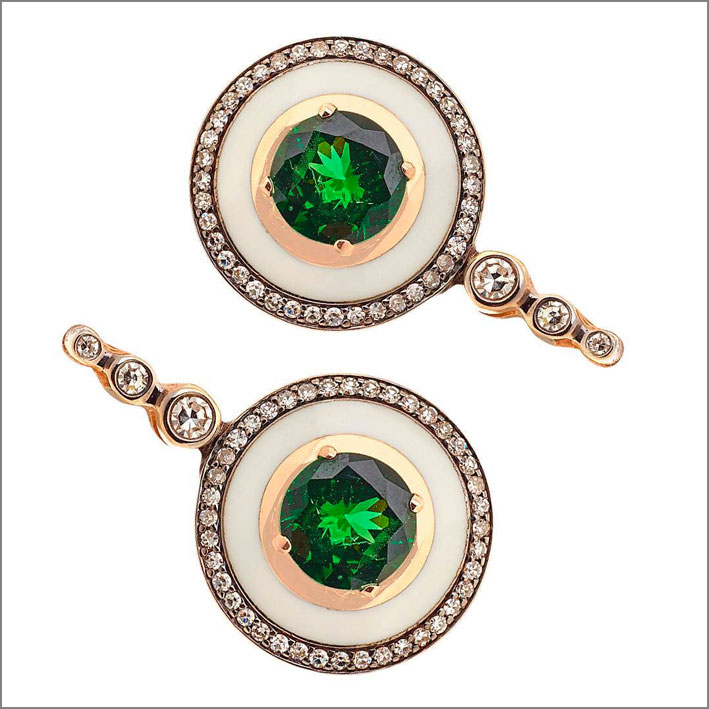
Colour: owes its color to the presence of vanadium and chromium in small part, the same elements that give the emerald its colors. If a larger amount of vanadium accentuates the green Tsavorite, a yellowish tinge instead indicates the presence of iron. The green runs from vivid and clear to deep and velvety and, like all garnets, has a beautiful sheen, thanks to the high refractive index. Compared to emerald but has fewer inclusions and can also be flawless to the naked eye.
Sources: more rare emerald it has two major mining sites, the Scorpion mine near the Tsavo National Park in Kenya and the Merelani hills in Arusha region in Tanziana. And a small field in the province of Tulear in Madagascar.
Demantoid Garnet
A variety of Andradite Garnet, discovered in the Urals in 1849, has an exceptional brightness and its name was borrowed from German Demant because as diamond-like sparkle. Passion jeweler Carl Faberge, who just could it inserted in its creation and contributed to his legendary reputation, was coveted by many even by the head of Tiffany gemologist, George Frederick Kunz, who went to Russia with the aim to buy all specimens on the market. The Soviet revolution it blocked the mire and marketing, but many years later, in 1991, thanks to the filming of the activities mineriarie in the Urals and the discovery of other deposits in Namibia, came to the fore.

Colour: depending on the amount of chromium and iron, varies from deep green to yellowish green to yellow or olive green. In practice, the greater the presence of iron is more yellow the stone. And although green forest is the reference tone, in the case of the Demantoid what really counts is the fire, that the variety and intensity of the play of colors when it reflects the light.
Sources: the Urals come specimens of intense green color with a peculiarity, the inclusions ponytail, that make them special, while the stones of Namibia are clearer and without inclusions.
Valuation: garnet is a type II gem, which may contain a few minor inclusions visible to the naked eye, which are tolerable if they compromise the beauty of the stone. However, there are examples impeccable in darker shades, whatever the color and smaller.
